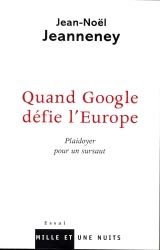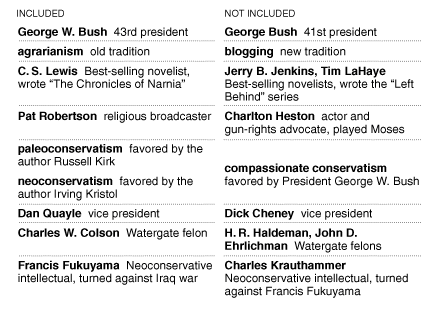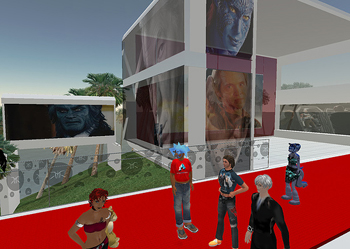Over the last several months, as I’ve met with the folks from if:book and with the quite impressive group of academics we pulled together to discuss the possibility of starting an all-electronic scholarly press, I’ve spent an awful lot of time thinking and talking about peer review — how it currently functions, why we need it, and how it might be improved. Peer review is extremely important — I want to acknowledge that right up front — but it threatens to become the axle around which all conversations about the future of publishing get wrapped, like Isadora Duncan’s scarf, strangling any possible innovations in scholarly communication before they can get launched. In order to move forward with any kind of innovative publishing process, we must solve the peer review problem, but in order to do so, we first have to separate the structure of peer review from the purposes it serves — and we need to be a bit brutally honest with ourselves about those purposes, distinguishing between those purposes we’d ideally like peer review to serve and those functions it actually winds up fulfilling.
The issue of peer review has of course been brought back to the front of my consciousness by the experiment with open peer review currently being undertaken by the journal Nature, as well as by the debate about the future of peer review that the journal is currently hosting (both introduced last week here on if:book). The experiment is fairly simple: the editors of Nature have created an online open review system that will run parallel to its traditional anonymous review process.
From 5 June 2006, authors may opt to have their submitted manuscripts posted publicly for comment.
Any scientist may then post comments, provided they identify themselves. Once the usual confidential peer review process is complete, the public ‘open peer review’ process will be closed. Editors will then read all comments on the manuscript and invite authors to respond. At the end of the process, as part of the trial, editors will assess the value of the public comments.
As several entries in the web debate that is running alongside this trial make clear, though, this is not exactly a groundbreaking model; the editors of several other scientific journals that already use open review systems to varying extents have posted brief comments about their processes. Electronic Transactions in Artificial Intelligence, for instance, has a two-stage process, a three-month open review stage, followed by a speedy up-or-down refereeing stage (with some time for revisions, if desired, inbetween). This process, the editors acknowledge, has produced some complications in the notion of “publication,” as the texts in the open review stage are already freely available online; in some sense, the journal itself has become a vehicle for re-publishing selected articles.
Peer review is, by this model, designed to serve two different purposes — first, fostering discussion and feedback amongst scholars, with the aim of strengthening the work that they produce; second, filtering that work for quality, such that only the best is selected for final “publication.” ETAI’s dual-stage process makes this bifurcation in the purpose of peer review clear, and manages to serve both functions well. Moreover, by foregrounding the open stage of peer review — by considering an article “published” during the three months of its open review, but then only “refereed” once anonymous scientists have held their up-or-down vote, a vote that comes only after the article has been read, discussed, and revised — this kind of process seems to return the center of gravity in peer review to communication amongst peers.
I wonder, then, about the relatively conservative move that Nature has made with its open peer review trial. First, the journal is at great pains to reassure authors and readers that traditional, anonymous peer review will still take place alongside open discussion. Beyond this, however, there seems to be a relative lack of communication between those two forms of review: open review will take place at the same time as anonymous review, rather than as a preliminary phase, preventing authors from putting the public comments they receive to use in revision; and while the editors will “read” all such public comments, it appears that only the anonymous reviews will be considered in determining whether any given article is published. Is this caution about open review an attempt to avoid throwing out the baby of quality control with the bathwater of anonymity? In fact, the editors of Atmospheric Chemistry and Physics present evidence (based on their two-stage review process) that open review significantly increases the quality of articles a journal publishes:
Our statistics confirm that collaborative peer review facilitates and enhances quality assurance. The journal has a relatively low overall rejection rate of less than 20%, but only three years after its launch the ISI journal impact factor ranked Atmospheric Chemistry and Physics twelfth out of 169 journals in ‘Meteorology and Atmospheric Sciences’ and ‘Environmental Sciences’.
These numbers support the idea that public peer review and interactive discussion deter authors from submitting low-quality manuscripts, and thus relieve editors and reviewers from spending too much time on deficient submissions.
By keeping anonymous review and open review separate, without allowing the open any precedence, Nature is allowing itself to avoid asking any risky questions about the purposes of its process, and is perhaps inadvertently maintaining the focus on peer review’s gatekeeping function. The result of such a focus is that scholars are less able to learn from the review process, less able to put comments on their work to use, and less able to respond to those comments in kind.
If anonymous, closed peer review processes aren’t facilitating scholarly discourse, what purposes do they serve? Gatekeeping, as I’ve suggested, is a primary one; as almost all of the folks I’ve talked with this spring have insisted, peer review is necessary to ensuring that the work published by scholarly outlets is of sufficiently high quality, and anonymity is necessary in order to allow reviewers the freedom to say that an article should not be published. In fact, this question of anonymity is quite fraught for most of the academics with whom I’ve spoken; they have repeatedly responded with various degrees of alarm to suggestions that their review comments might in fact be more productive delivered publicly, as part of an ongoing conversation with the author, rather than as a backchannel, one-way communication mediated by an editor. Such a position may be justifiable if, again, the primary purpose of peer review is quality control, and if the process is reliably scrupulous. However, as other discussants in the Nature web debate point out, blind peer review is not a perfect process, subject as it is to all kinds of failures and abuses, ranging from flawed articles that nonetheless make it through the system to ideas that are appropriated by unethical reviewers, with all manner of cronyism and professional jealousy inbetween.
So, again, if closed peer review processes aren’t serving scholars in their need for feedback and discussion, and if they can’t be wholly relied upon for their quality-control functions, what’s left? I’d argue that the primary purpose that anonymous peer review actually serves today, at least in the humanities (and that qualifier, and everything that follows from it, opens a whole other can of worms that needs further discussion — what are the different needs with respect to peer review in the different disciplines?), is that of institutional warranting, of conveying to college and university administrations that the work their employees are doing is appropriate and well-thought-of in its field, and thus that these employees are deserving of ongoing appointments, tenure, promotions, raises, and whathaveyou.
Are these the functions that we really want peer review to serve? Vast amounts of scholars’ time is poured into the peer review process each year; wouldn’t it be better to put that time into open discussions that not only improve the individual texts under review but are also, potentially, productive of new work? Isn’t it possible that scholars would all be better served by separating the question of credentialing from the publishing process, by allowing everything through the gate, by designing a post-publication peer review process that focuses on how a scholarly text should be received rather than whether it should be out there in the first place? Would the various credentialing bodies that currently rely on peer review’s gatekeeping function be satisfied if we were to say to them, “no, anonymous reviewers did not determine whether my article was worthy of publication, but if you look at the comments that my article has received, you can see that ten of the top experts in my field had really positive, constructive things to say about it”?
Nature‘s experiment is an honorable one, and a step in the right direction. It is, however, a conservative step, one that foregrounds the institutional purposes of peer review rather than the ways that such review might be made to better serve the scholarly community. We’ve been working this spring on what we imagine to be a more progressive possibility, the scholarly press reimagined not as a disseminator of discrete electronic texts, but instead as a network that brings scholars together, allowing them to publish everything from blogs to books in formats that allow for productive connections, discussions, and discoveries. I’ll be writing more about this network soon; in the meantime, however, if we really want to energize scholarly discourse through this new mode of networked publishing, we’re going to have to design, from the ground up, a productive new peer review process, one that makes more fruitful interaction among authors and readers a primary goal.
 I just came across the pre-pub materials for a book, due out this November from the University of Chicago Press, by Jean-Noël Jeanneney, president of the Bibliothè que Nationale de France and famous critic of the Google Library Project. You’ll remember that within months of Google’s announcement of partnership with a high-powered library quintet (Oxford, Harvard, Michigan, Stanford and the New York Public), Jeanneney issued a battle cry across Europe, warning that Google, far from creating a universal world library, would end up cementing Anglo-American cultural hegemony across the internet, eroding European cultural heritages through the insidious linguistic uniformity of its database. The alarm woke Jacques Chirac, who, in turn, lit a fire under all the nations of the EU, leading them to draw up plans for a European Digital Library. A digitization space race had begun between the private enterprises of the US and the public bureaucracies of Europe.
I just came across the pre-pub materials for a book, due out this November from the University of Chicago Press, by Jean-Noël Jeanneney, president of the Bibliothè que Nationale de France and famous critic of the Google Library Project. You’ll remember that within months of Google’s announcement of partnership with a high-powered library quintet (Oxford, Harvard, Michigan, Stanford and the New York Public), Jeanneney issued a battle cry across Europe, warning that Google, far from creating a universal world library, would end up cementing Anglo-American cultural hegemony across the internet, eroding European cultural heritages through the insidious linguistic uniformity of its database. The alarm woke Jacques Chirac, who, in turn, lit a fire under all the nations of the EU, leading them to draw up plans for a European Digital Library. A digitization space race had begun between the private enterprises of the US and the public bureaucracies of Europe.



